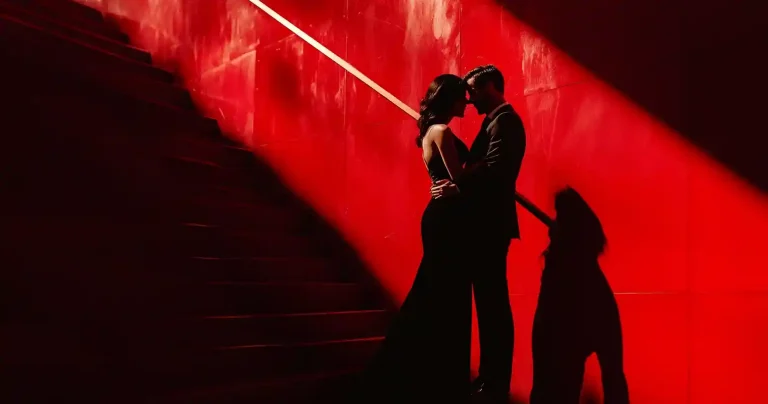So, you’ve written a book. First of all, congrats! Not everyone makes it past “I have an idea.” But now comes the tricky part—getting people to actually buy it and read it. A successful book launch doesn’t just happen by chance; it takes smart book launch strategies to create buzz and excitement.
Think of your launch as rolling out the red carpet for your book. It’s your story’s big debut, complete with all the glitz and preparation of a movie premiere—minus the flashing cameras (unless you’ve got really enthusiastic friends with smartphones).
But how do you make sure your book launch grabs attention and drives readers to take action? Let’s dive into the ultimate book launch strategy that will set your book up for success.
1. Start the Hype Train Early
Before you even think about launch day, you need to start building momentum. This isn’t something you do two weeks before your release. Nope. Start as soon as you know your book is coming out. Why? Because readers like to feel part of the process. They want to know the story behind the story.
Real World Example: Savannah Gilbo learned from her first book launch that the secret sauce is all about planning ahead. She made sure to build anticipation early, like a literary version of a countdown to New Year’s.
The Power of a Teaser Campaign
Remember how Marvel drops those cryptic trailers that make fans freak out on Twitter? That’s the vibe you’re going for. Share snippets from your book—just enough to hook your audience. Think a juicy quote, a dramatic chapter ending, or even a behind-the-scenes photo of your writing setup (yes, messy desks are relatable).
Building Mystery Without Being Annoying
Here’s the key: don’t overshare. You want to keep people intrigued, not spoil the entire plot. Drop just enough breadcrumbs to make them curious. Imagine Netflix dropping only the trailer for Stranger Things without spoiling the entire season in a tweet.
2. Social Media Book Launch Strategies to Engage Readers
Social media isn’t just for cat videos and avocado toast pics. It’s where your readers are hanging out. Whether they’re scrolling TikTok, geeking out on #BookTok, or retweeting memes on Twitter, this is where you start connecting.
Find Your Readers Where They Hang Out
Not every platform will work for every book. Writing YA fantasy? You’ll want to camp out on TikTok and Instagram. Have a business book? LinkedIn might be your jam. Avoid platforms that don’t make sense for your audience. (No one’s on MySpace anymore, except maybe Tom.)
Real World Example: Melanie Herschorn used social media to create real connections with her readers. She didn’t just post book ads—she made her platforms a place where readers actually wanted to hang out.
#Hashtag Your Way to Visibility
Hashtags are your best friend. They help people find your posts even if they don’t follow you. Use popular ones like #AmReading, #BookLaunch, and #NewRelease. And if your genre has its own trendy tag (hello, #BookTok), jump on that.
3. Build a Buzz-Worthy Launch Team
No author is an island. You need a squad to help spread the word. Enter: your launch team. These are the people who’ll champion your book and make noise about it.
Who’s on Your Team?
Recruit your superfans. These might be beta readers who already love your book, fellow authors, or that one friend who never misses a chance to post about their favorite reads. The goal? Create a group that’s as excited about your book as you are.
Keep Them Engaged (and Excited)
Your launch team isn’t just there for the free ARC (although, let’s be real, they love that too). Share updates, host fun challenges, or create polls. The more they feel involved, the more they’ll promote your book like it’s the next Hunger Games.
Real World Example: Kathleen Gage knows the power of a squad. She pulled together a dedicated team of fans to help her spread the word. Think of this book launch strategy as having a mini marketing army cheering you on.
4. Pre-Order Perks That Readers Can’t Resist
Let’s talk about pre-orders. Think of them as the RSVP to your book’s party. The more people who sign up, the more epic the celebration. But how do you convince readers to commit before the book is even out? Simple. Make it irresistible.
Exclusive Content Is King
Everyone loves a good bonus. Offer pre-order perks that readers can’t find anywhere else. Bonus chapters, deleted scenes, or even a juicy epilogue can work wonders. It’s like getting an exclusive behind-the-scenes reel for Game of Thrones—minus the heartbreak (hopefully).
Swag works, too. Bookmarks, signed bookplates, or digital art inspired by your story make readers feel like VIPs. You don’t need to break the bank. Even small tokens can feel like treasures when tied to your book.
Turn Pre-Orders Into a Party
Make a big deal out of every pre-order. Did your cousin just order a copy? Shout them out on Instagram. Did you hit 50 pre-orders? Celebrate with a giveaway. People love to feel part of something exciting. Think of it as creating a hype snowball—once it starts rolling, it gets bigger fast.
Real World Example: Stephanie Chandler turned pre-orders into a treasure hunt. She offered exclusive content, like bonus chapters and goodies, to make early buyers feel like VIPs.
5. Collaborate with Influencers and Bloggers
Book influencers are everywhere these days. You’ve got TikTokers raving about fantasy novels, bloggers dissecting thrillers, and Instagrammers sharing dreamy flatlays with romance covers. These folks can help you reach readers you wouldn’t otherwise find.
How to Find the Right Partners
Don’t just DM every influencer with #Bookstagram in their bio. Look for people who actually read books in your genre. If you’re promoting a steamy romance, someone who only reviews cozy mysteries isn’t your person. Think of it like dating—you want someone who vibes with your story.
Pitch Perfect: Getting Influencers to Say Yes
When you reach out, keep it short and sweet. Mention why you think their audience would love your book. Offer a free copy. And don’t forget to be polite. Nobody wants to help someone who sounds like a demanding diva.
Also, be prepared for a mix of responses. Some might jump on board right away. Others might ghost you like a bad Tinder match. That’s okay! Focus on the ones who are excited about your book.
Real World Example: Stacy Tuschl knows influencers aren’t just for makeup brands. By teaming up with bloggers and creators in her niche, she reached readers who wouldn’t have found her book otherwise.
6. Host Events That Get People Talking
Events are like fireworks for your book’s launch. They light up the sky and get people looking your way. Whether virtual or in-person, a good event can create buzz that lasts long after the party’s over.
Virtual Events for the Win
Virtual events are the MVP of modern book marketing. Think live Q&A sessions, virtual book tours, or even a cozy read-along on Zoom. You don’t even need fancy equipment. Your laptop and a decent internet connection are enough to start.
Bonus: No awkward small talk with strangers. You can stay in pajama pants if you want. Just make sure your top half looks professional.
Creative In-Person Ideas (Even on a Budget)
If in-person events are your jam, think outside the bookstore. Libraries, coffee shops, or even your backyard can make for great venues. Serve snacks, chat with readers, and maybe do a live reading. Channel your inner Neil Gaiman and charm the crowd.
If you’re low on funds, team up with a local business. They get foot traffic; you get a cool venue. Win-win.
Real World Example: Shannon Meyerkort made her launch unforgettable by hosting an event that felt more like a celebration than a promotion. Whether virtual or in-person, her approach created real excitement.
7. Create Content That Sells Your Story
If your book were a blockbuster, content would be the trailer. You need to give readers a taste that leaves them begging for more popcorn. Creating buzz-worthy content doesn’t mean spamming people with “Buy my book!” posts. It’s about crafting content that makes them curious.
The Magic of a Book Trailer
Yes, book trailers are a thing, and no, they’re not just for big publishers. Think of them as mini-movies for your book. They don’t need to be Spielberg-level productions. Even a simple slideshow with dramatic music can grab attention.
Got a thriller? Add suspenseful music and flashes of your creepiest scenes. Writing a romance? Cue the swoony love song and dreamy sunsets. It’s like TikTok meets The Notebook. Bonus points if your trailer ends with a cliffhanger—it’s the literary equivalent of “To be continued.”
Blog Posts, Guest Posts, and More
You’ve got expertise, so use it. Write blog posts about your writing process, the inspiration behind your book, or fun facts about your characters. Think Lord of the Rings-level world-building tidbits but condensed into a bite-sized post.
Guest posting is another goldmine. Find blogs in your genre and pitch an idea. It could be anything from “10 Things I Learned Writing My First Mystery” to “How I Wrote My Fantasy Novel in a Coffee Shop That Only Played Taylor Swift Songs.”
8. Use Email Marketing to Keep Fans in the Loop
An email list might not sound glamorous, but it’s one of the most reliable book launch strategies for building buzz. Think of it as a VIP club for your readers. The ones who sign up are already invested—they just need a nudge to pre-order or attend your launch.
Build Your List (Before It’s Too Late!)
Start collecting emails early. Offer something enticing to get people to sign up. Maybe a free short story, an exclusive first chapter, or a downloadable guide (if your book is non-fiction). It’s like handing out samples at Costco—once they’ve had a taste, they’ll want the whole thing.
Promote your email list everywhere: your website, social media, even in your email signature. Don’t be shy about asking. You’re not a spammer; you’re an author building your tribe.
Craft Emails They’ll Actually Open
Here’s the secret: your subject lines need to pop. “My Book Launch” is meh. “Guess What’s Coming to Your Bookshelf Soon?” is way better. Make readers curious enough to click.
Once they open your email, keep it short and sweet. Share updates, behind-the-scenes stories, or exciting milestones. Oh, and don’t forget a clear call to action. Want pre-orders? Ask for them. Want shares? Say so. Your readers aren’t mind readers—unless you’re writing sci-fi.
9. Leverage Early Reviews and Beta Readers
Reviews are like gold stars for your book. They build credibility and make readers feel like they’re not taking a gamble. Early reviews are especially powerful for pre-launch buzz.
Why Reviews Matter More Than You Think
Let’s be real: most people won’t buy a book with zero reviews. It’s like choosing a restaurant with no Yelp stars. A few solid reviews can make all the difference. They help your book look legit.
How to Get Beta Readers to Spread the Word
Your beta readers are your first fans. Treat them like royalty. Send them a heartfelt thank-you, maybe a signed copy or some exclusive swag. Ask them to share their thoughts on Goodreads or social media. You’d be surprised how far a little gratitude can go.
Also, don’t be afraid to nudge. A friendly, “Hey, did you love it? Would you mind sharing a quick review?” can work wonders.
Real World Example: Michelle M. Pillow turned to her beta readers for honest feedback and glowing reviews. She knew early buzz could build trust with new readers.
10. Host Events That Get People Talking
Events are like the confetti cannons of book marketing. They make a splash, grab attention, and get people excited. Whether you go virtual or stick to in-person gatherings, hosting events can create serious buzz.
Virtual Events for the Win
Let’s face it, virtual events are where it’s at. You can reach readers from anywhere—no plane tickets or awkward small talk required. Think live Q&A sessions, virtual book tours, or even a read-along where you share your favorite chapter.
Platforms like Zoom, Instagram Live, or even YouTube make this super easy. Plus, virtual events are great if you’d rather not wear real pants. Just make sure your top half looks like you’ve got your life together.
Interactive events work best. Answer audience questions, share funny behind-the-scenes stories, or give a sneak peek at your next project. Readers love feeling like they’re chatting with a friend, not attending a corporate webinar.
Creative In-Person Ideas (Even on a Budget)
In-person events are making a comeback (yay for human interaction!). But don’t limit yourself to bookstores. Coffee shops, libraries, or local community centers can be perfect venues. Got a fantasy novel? Host a themed event—think costumes, props, and a playlist straight out of Middle-earth.
And if money’s tight? Partner with a local business. A trendy café or indie shop might love the chance to co-host a cool event. They get traffic; you get a free venue. Everybody wins.
11. The Magic of Pre-Orders
Pre-orders are like the ultimate hype tool. They show retailers that your book has demand, boost your sales ranking, and create momentum for launch day. Basically, they’re your secret weapon.
Why Pre-Orders Are Crucial
Retailers like Amazon and Barnes & Noble pay attention to pre-orders. The more you have, the better your book’s placement in their algorithms. This means more visibility, which means more readers finding your book. It’s like being bumped to first class—you suddenly get noticed.
Pre-orders also give you a chance to make a killer first impression. A strong launch week can set the tone for your book’s success.
How to Turn Pre-Orders Into Gold
Offer incentives. Readers love getting something extra for their commitment. Think bonus content, early access to chapters, or even a signed bookplate. If you’re feeling fancy, create a limited-edition item like a bookmark or mini print.
Promote these perks everywhere—your website, social media, and email list. The goal? Make readers feel like they’re getting the VIP treatment. After all, who doesn’t love a good deal?
12. Build Anticipation with Reader Involvement
Readers love being part of the journey. The more you include them, the more invested they’ll be in your success.
Run Polls and Contests
Engage your audience with fun polls. Ask them to vote on cover designs, character names, or even chapter titles. It’s like letting them peek behind the curtain.
Or, host a contest. “Name a character in my book” is always a hit. It’s a simple way to get readers excited—and who wouldn’t want bragging rights like, “I named the villain in this bestseller”?
Share the Journey
Let your audience see the highs and lows of your writing process. Did your cat walk across your keyboard and delete a chapter? Share it. Readers love the human side of authors. Plus, it makes them root for you even harder.
13. Leverage Early Reviews and Beta Readers
If your book were a Netflix show, early reviews would be the buzz-worthy Rotten Tomatoes score. They’re critical to building credibility and momentum. And beta readers? They’re your first fan club, ready to spread the word.
Why Reviews Matter
Let’s be real: no one wants to take a chance on a book with zero reviews. It’s like showing up at a restaurant that’s completely empty—suspicious. Early reviews make your book look legit. They also help readers decide if your story is their cup of tea (or glass of wine, no judgment).
And let’s not forget the algorithm gods. Platforms like Amazon prioritize books with reviews. More reviews mean better rankings. Better rankings mean more visibility. It’s a beautiful, book-selling circle of life.
How to Get Early Reviews
Start with your beta readers. These lovely folks have already read your book, so ask them to leave honest reviews on Goodreads, Amazon, or wherever your book is listed. Be polite, but don’t be shy. A simple, “Hey, if you enjoyed the book, I’d love it if you could share your thoughts in a review,” works wonders.
For more reviews, consider offering ARCs (advanced reader copies) to bloggers, influencers, or even your email list subscribers. It’s like a sneak preview, and people love being first in line.
14. Keep the Buzz Rolling Post-Launch
The party doesn’t stop after launch day. In fact, keeping momentum going is just as important as building it. Think of it like a Beyoncé album drop—she doesn’t just release it and disappear. She keeps the excitement alive.
Engage with Readers
Your readers are your biggest cheerleaders. Respond to their comments, share their posts, and thank them for their support. Got a reader who posted a glowing review? Share it on your social media. Everyone loves a shoutout.
Host a post-launch event, like a live reading or an “ask me anything” session. Readers love feeling connected to authors. It’s like having a backstage pass to their favorite band.
Plan Your Next Move
Don’t let the post-launch buzz fizzle out. Keep sharing content. Post updates about your book’s milestones—whether it’s hitting a sales goal, being featured in a blog, or getting a killer review from a big name in your genre.
And here’s a pro tip: tease your next project. Even if you’re still in the brainstorming stage, dropping hints keeps readers invested in your journey. It’s like Marvel teasing their next phase. Fans love something to look forward to.
Wrap-Up: The Buzz Starts With You
Building buzz for your book isn’t rocket science. It’s about connecting with your audience, creating excitement, and making readers feel like they’re part of something special. Whether it’s through pre-orders, events, or reviews, every little effort adds up.
Remember, even the most successful authors started small. Stephen King’s Carrie was rejected 30 times before it became a bestseller. J.K. Rowling’s Harry Potter manuscript was turned down by 12 publishers. The moral? Persistence pays off.
So get out there, start the hype train, and let the world know your book is coming. And who knows? Maybe one day, someone will be writing a blog post about how you built buzz for your breakout bestseller.








